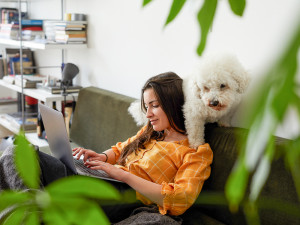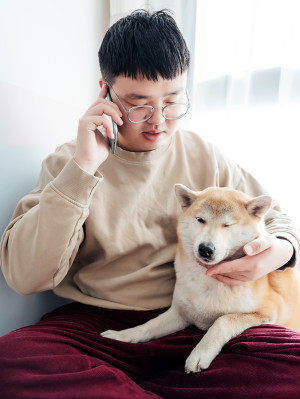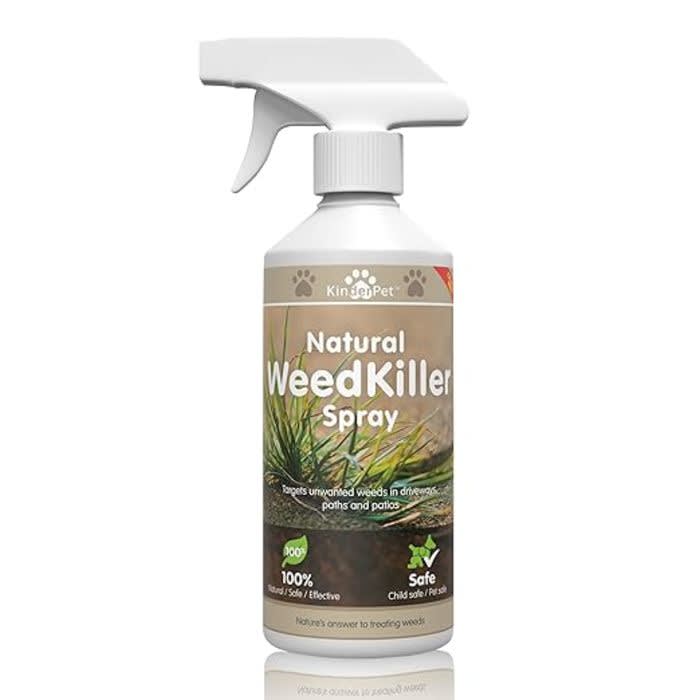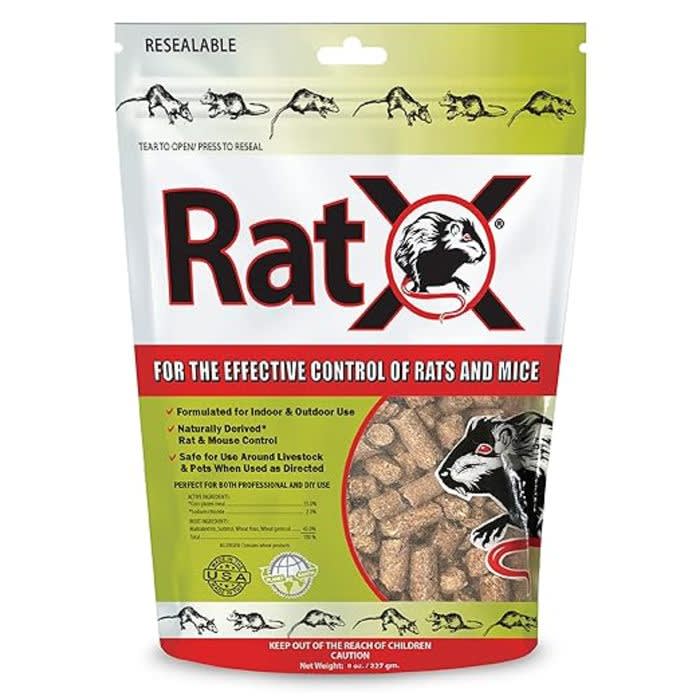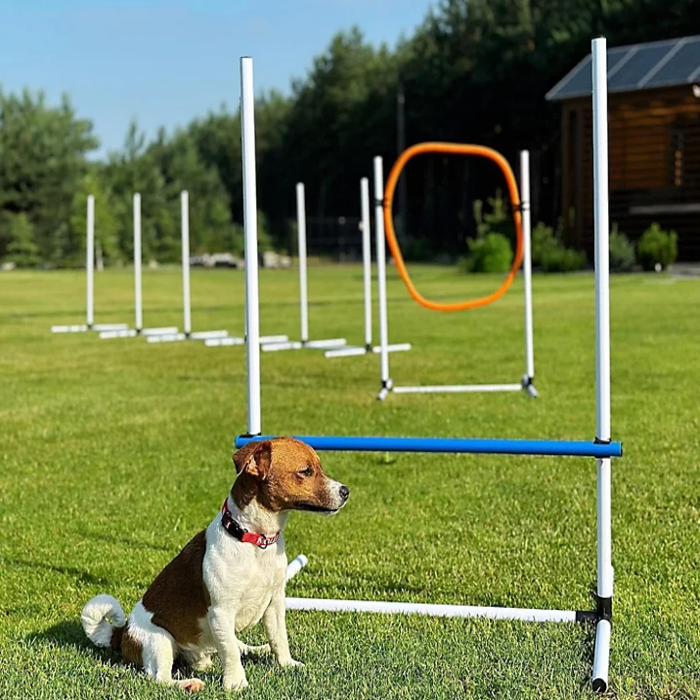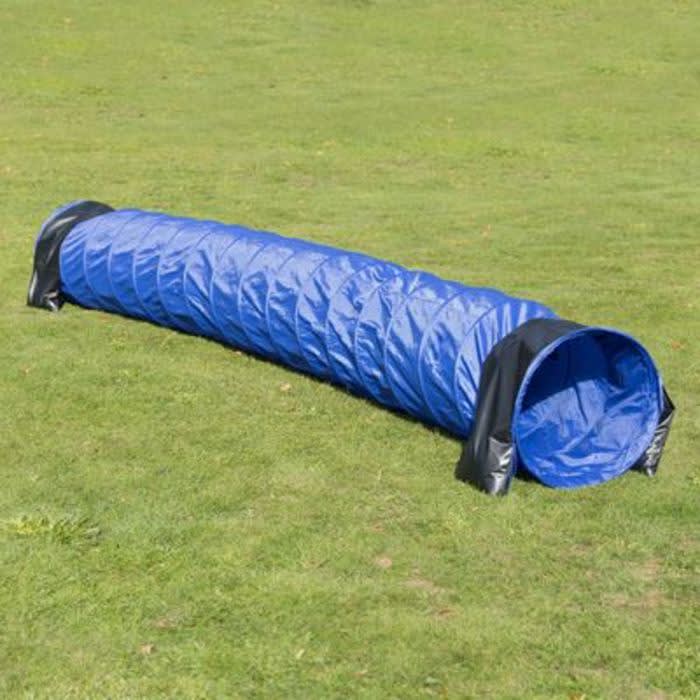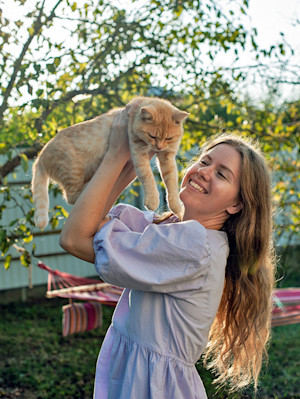How To Create a Dog-Friendly Garden
Green fingers at the ready...

share article
As a dog parent, I enjoy nothing more than walking through the fields watching my canine companion, Dylan, leap through the tall grass like a pogo stick. But what if you don’t have as much time on your hands as you’d like to take your dog for multiple walks a day, or perhaps your dog doesn’t cope well in public? If you have a garden available to you, then with a little imagination and creativity, you can provide your dog with a safe and enjoyable garden for them to explore and play in.
The design
Secure the space
The most important thing for any garden is that it is completely secure to ensure your pup can’t escape. Ensure the perimeter is high enough to stop even the springiest of dogs from jumping over. You only have to sit and observe some dog working trialsopens in a new tab events to actually see how high dogs can scale, which is a lot higher than you might think! Check for any gaps or holes that your nimble dog may be able to squeeze through, too. Don’t take anything for granted, where there’s a will, there’s a way.
Plan the layout
Think about the space you have available and how it would be best utilised to accommodate the preferences your dog may have for certain types of games and activitiesopens in a new tab. For example, if your dog loves to run or play fetchopens in a new tab, leave open spaces for them to do so. If they love to dig, consider creating a designated digging area where they can do so freely – hopefully diverting them away from damaging your prize-winning flowerbeds. You can set up a designated play area with toys and obstacles for your dog to enjoy, and if your pup is the athletic type, add some agility equipmentopens in a new tab such as tunnels and hurdles to keep them entertained and mentally stimulated.
Create clear paths and walkways throughout to prevent them from trampling on delicate plants and flowers; paving is better than gravel or stones for this, as they can get stuck in your pooch’s delicate paws or, worse still, become a choking hazard if they’re swallowed.
Keep health and safety in mind
Dogs can overheat quickly, especially in summeropens in a new tab, so be sure to provide shaded areas in the garden where they can rest and cool off – sprinklers and doggie paddling pools can be a really fun addition in the summer months and most pups love splashing in water.
Always make sure that clean fresh water is readily available for your dog to drink whilst they’re working up a thirst playing in the garden. Standing rain water, in places like empty plant pots with no drainage, can look appealing to dogs – so be careful to ensure your dog only has fresh water available to them to drink and that there aren’t pools of dirty wateropens in a new tab to entice them, which can lead to illness if consumed. Ensure you remove any sharp objects, small toys or other potential hazards that could injure them whilst playing.
Is artificial turf safe for dogs?
Many garden designers are fans of fake grass – it’s low maintenance, clean and can be used all year round, but is it actually suitable for our canine companions?
Pros of artificial turf
Artificial turf requires minimal maintenance compared to natural grass: you don’t need to mow, water or fertilise it.
It can withstand heavy foot traffic, whether this is from dogs running, kids playing football or adults entertaining into the early hours.
It’s easier to clean and your dog’s faeces can be quickly removed and the surface hosed down to remove urine and other dirt. It’s also quite partial to the odd hoovering!
It won’t attract parasites like fleasopens in a new tab or ticksopens in a new tab, which can be harmful to your pup.
It doesn’t produce pollen, so may well be a better option if your dog has allergiesopens in a new tab or sensitivities.
When it rains, you won’t have to worry about your pup tracking muddy paw prints through the house, which means your dog can enjoy the garden all year round.
Cons of artificial turf
Artificial turf can become significantly hotter than natural grass, especially in direct sunlight. The heat retention can be uncomfortable for dogs in the hot summer months. Always be sure to test the surface yourself first before allowing your dog access – if it’s too hot to hold your hand to, then it’s too hot for your dog’s paws.
We may see artificial turf as a soft surface compared with pavements, however it is still harder than natural grass. Extended play on artificial grass may be less forgiving on your dog’s joints and paws compared to them playing on fresh grass.
If you are not super-efficient at cleaning and providing proper drainage, odours can build up and become quite pungent. A lack of drainage could also lead to pooling of water on the surface.
It is quite an expensive investment as upfront costs of installation can be relatively high compared to seeding or laying natural grass. However, it may save money in the long run.
So it really is a matter of your individual circumstances and budget but always ensure that the artificial turf is high quality and properly installed.
Which plants are toxic to dogs?
It is essential to research any plants you have in your home or garden to ensure they are safe for your dog. Batterseaopens in a new tab provides a comprehensive list but some common examples of plants that can be toxic to dogs include the following:
Liliesopens in a new tab: all parts of a lily are toxic to cats and can cause kidney failure. Dogs are less susceptible but can still experience symptoms like vomitingopens in a new tab and lethargy if they ingest them.
Rhododendrons: these popular colourful shrubs contain toxins that can cause vomiting, diarrhoeaopens in a new tab, seizures, liver failure and even death if ingested.
Tulips: the bulbs of this popular spring plant can cause gastrointestinal upset, drooling and even difficulty breathing in dogs.
Ivy: ingestion of English Ivy can cause vomiting, diarrhoea and abdominal pain.
Foxglove: Foxglove contains cardiac glycosides, which can cause vomiting, diarrhoea, weakness and even sudden death.
Daffodils: all parts of the daffodil can cause vomiting, diarrhoea and abdominal pain.
So with all these popular choices on the list surely there can’t be many left? Fear not, you will still be able to bring some fun and colour with roses, camellias, magnolia, sunflowers, lavender, ferns and grasses. If you’re into cooking, you can also consider a fresh-smelling herb garden: mint, rosemary, lemon balm and thyme are all considered safe for dogs.
Other garden hazards for dogs
All areas that your pup has access to should be scrutinised for any potential toxic products. Rat poison, also known as rodenticide, can be extremely harmful to dogs if ingested. Most rat poisons work by causing internal bleeding in rats, which can be fatal if left untreated in dogs. Symptoms of rat poisoning in dogs can depend on the type ingested and the amount consumed, but ones to lookout for include:
lethargy
weakness
pale gums
coughing or vomiting blood
bleeding from the nose and gums
Sadly, some anticoagulant rodenticides pose the greatest risk as they have a delayed onset of symptoms. Early intervention is crucial for a successful outcome so seek immediate veterinary care if you think your dog may have ingested rat poison.
Slug and snail baitopens in a new tab can also be poisonous to dogs if ingested. It contains the chemical metaldehyde, which is highly toxic and will affect the nervous system leading to symptoms such as muscle tremors and seizures. If you suspect your dog has ingested slug bait, seek immediate veterinary care.
To prevent accidental poisoning keep rat poison, slug bait and other toxic substances out of your dog’s reach. Store in secure containers or put in places inaccessible to pets and ensure you use pet-safe alternatives. Always exercise caution when walking your dog in areas where these types of products may be used, such as parks or agricultural areas. Prompt action is key if you suspect your dog has ingested any potential toxic substance – so contact your veterinarian or the Animal Poison Lineopens in a new tab (01202 509 000, £35–45 per phone call) for guidance. Early intervention can significantly improve your dog’s chances of recovery.
Dog-safe products for your garden
Our editors (and their pets) picked out these products. They’re always in stock at the time we publish, but there’s a chance they’ll sell out. If you do buy through our links, we may earn a commission.

Zoe Blake RVN, ISFMCertFN / AdvCertFB, MISAP
Zoe is a registered veterinary nurse and has been in the profession for over 30 years. She enjoys educating pet owners on all aspects of their care and regularly writes to support her work. When she is not chatting animals, she can be found running around the tennis court or exploring the countryside with her rescue dog, Dylan.
Related articles
![person playing tug with dog]() opens in a new tab
opens in a new tabThree Myths About Playing With Your Dog
Chase? Wrestle? Tug-o-war? Find out which are fair game
![action shot of a black and white Border Collie coming out of a tunnel section of a dog agility course at Crufts]() opens in a new tab
opens in a new tabWhat Does it Take to Be a Crufts Competitor? Tips From World-Class Trainers
And they all say the same simple thing…
![]() opens in a new tab
opens in a new tabHow to Work Out What ‘Drives’ Your Dog
You might already have a good idea of what your dog likes, but it‘s not always that straightforward
![Woman holding a beagle in warm dappled summer light]() opens in a new tab
opens in a new tabYou’ve Got a Summer-Lovin’ Pup. Here’s How to Keep Them Safe
Some like it hot (but not most dogs). Here are the season’s health hazards, from fleas to grass seeds
![Avoid heat stroke in dogs by sprinkling in the backyard with your dog]() opens in a new tab
opens in a new tabHeat–Stroke in Dogs: Signs, Treatment & Prevention Expert Advice
How to take precautions for your pup when temperatures rise
![]() opens in a new tab
opens in a new tabHow To Create a Cat-Safe Garden
Green fingers at the ready



